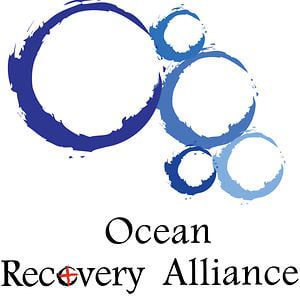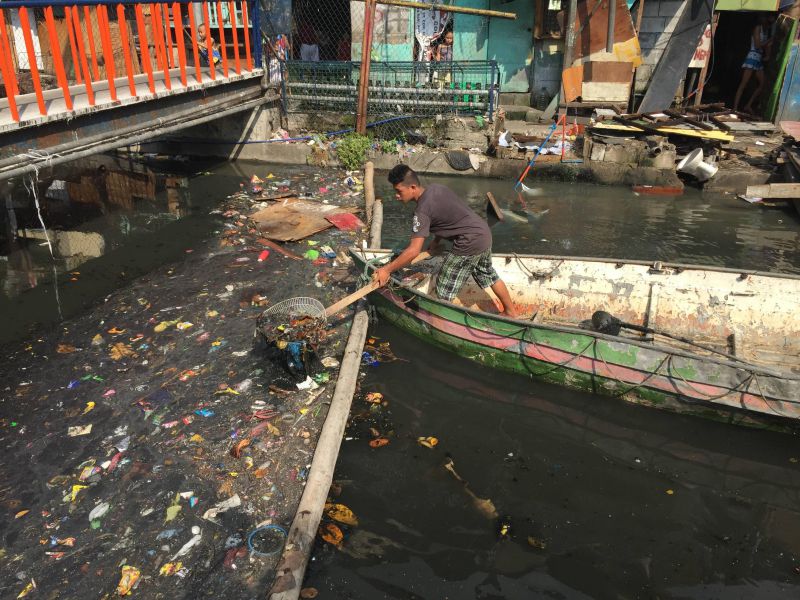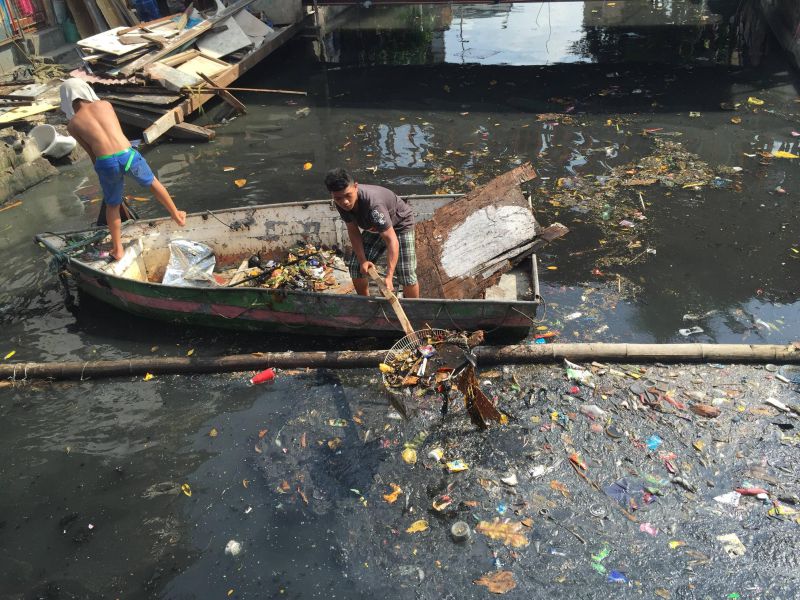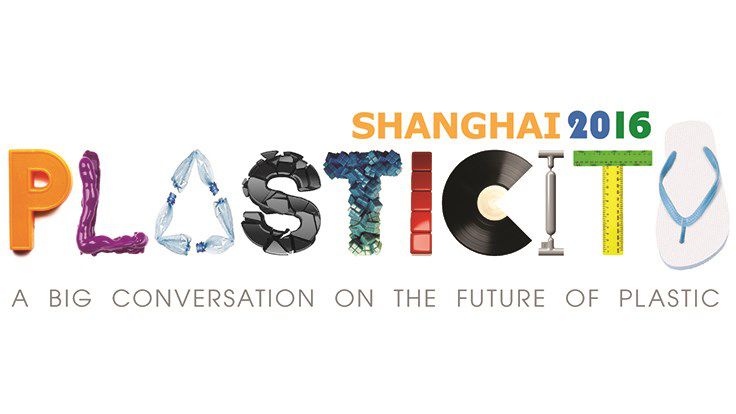In Conversation With Douglas Woodring of Ocean Recovery Alliance
Published on by Water Network Research, Official research team of The Water Network in Academic
This time, the Water Network team had a talk with Douglas Woodring. Doug is the co-founder of the Ocean Recovery Alliance, which is focused on bringing innovative solutions, technology, collaborations and policy together to impact positive improvements for the health of the ocean. He is also the founder of the Plasticity Forum, first launched at the Rio+20 Earth Summit, and since in Hong Kong. We thank Douglas Woodring for this amazing conversation.
Q1. How did you get interested in the non-glamorized “Ocean and plastic“ topic? What made you start Ocean Recovery Alliance?
I am a big outdoor person, and do a lot of sports in the water, including competitive swimming, outrigger paddling, diving and surfing. I organize some of the top open water swimming races in Hong Kong, and have been voted as one of the top 50 “Watermen” of all time. I grew up in California and then have worked in Asia for over 20 years, in both Japan and Hong Kong.
I have seen the difference between environmental protection in different countries (or lack thereof), and since I use the water more than others, and see the issues, it made me realize that there are not many people working on solving these issues in large scale, systematic ways, across borders, nations and continents. We are all connected to one body of water – the ocean, and it health is directly a result of both our over exploitation of it, and the pollution that we put into it, from the global network of arteries (rivers and streams), which are impacted by our daily lives on land.
When looking at the best ways to try to prevent the plastic pollution problem, we created two preventative programs, which are the only two in the world which exist, which can be used in any country, without the need for bans, legislative changes, or taxes – they just need people to use them, and once that happens, mindset change on this topic will help to bring new, innovative solutions to the issues at hand, and large wastage of resources.
These two projects are the Plastic Disclosure Project (video- http://bit.ly/PDPvideo - report for UNEP http://bit.ly/PDPReport), which is much like that of carbon and water reporting, but for plastic/waste, and our Global Alert Platform, http://bit.ly/GlobalAlert and http://bit.ly/GlobalAlertIntro1 for tracking trash hotspots anywhere in the world’s waterways or coastlines, using community reporting of big areas of trash near or in the water.
Q2. As a strategy, what is the vision of OceanAlliance and how do you plan to achieve it?
Our two global programs, the PDP and Global Alert, are really what we hope to have used around the world, as they can make a big difference once people focus on this issue. Unfortunately, it is not something that is still focused on yet, like that of climate change, but things are changing, and more people are becoming aware of the link between trash, pollution, water quality, tourism, health, and the ecosystem.
It used to be more of a “poor community’s” problem, but as the world gets smaller, these issues are impacting all of us, in greater ways. With plastic, a material which does not easily go away, its presences in remote locations, along with studies showing impacts to birds and animals is creating red-flags that continue to highlight our collective need to do a lot more on this topic in order to prevent further degradation.
We are a small group, so we look to others to work with in order to adopt our programs, and localize them for their use. Many want to do things, but they often do not know what to do, and we have done a lot of thinking in this space, so we are able to bring them up to speed quickly, and leap from some of the learning curves which therefore allows for expedited solutions.
We continue to create new programs, some of which are local, but also are meant for new communities who have not had such programs before. We then hope to have these replicated elsewhere, once a few case studies are shown. This is a key factor of success – the showcasing of case studies that work, so we are always looking for collaborating partners who want to take our work and programs elsewhere. This also often requires the magic word – funding, and resources.
Q3. You must be working with diverse international and local communities; what is your first-hand impression while working with them? Do you think communities are serious about minimizing ocean pollution?
I think the direct communities are, as they “feel the pain” when their water is polluted, there are no fish, or the tourists stop coming, because their environment is dirty. The problem is that they often do not have the support or focus from the local/national government, and are forced to make improvements, when there are also many other issues that need attention.
Trash and waste are usually one of the lower items on the agenda for governments, but that is why we have a lot of problems with water quality, health, and other issues that come from poor waste handling and recycling capacities. So, again, we need to show good case studies that work, because the local community gets engaged, excited and then the governments see how it works and want to expand elsewhere. That is when the momentum starts to pick up.
Q4. You have also organized the Plasticity Forum (http://bit.ly/Plasticity2015Vid) – what is the idea behind this initiative?
We launched this in Rio at the 20th anniversary of the original Earth Summit in order to bring the plastic pollution issue up to a higher level of awareness, like that of deforestation, climate change and other issues. However, we did this in a positive way, by not talking about the ocean, or the problems, but instead on the solutions, and what people are doing today, and how those can be scaled. This really resonated with people, and as a result, we are now into our 5th year.
Plasticity is all about the future of plastic and where the leaders are going with the design, innovation, materials, recycling and solutions, for a world without the waste (plastic) footprint. There is no other event that brings together the scope of experts across the industry, entrepreneurs, and brands who collectively are all part of the solution to the way we are currently mismanaging the resources of plastic.
5. Data says that roughly only 10% of plastic is annually recycled, why is there so much ignorance about recycling plastic? What's the best way governments, NGOs, and private businesses can address this issue?
This is true, and this is the big question.It does not help at all that oil prices are low, because that makes virgin plastic cheaper, and the value of recycled content even less. We need people to start demanding that products are made with recycled content, so that an economic “pull factors’ is created to bring a demand for plastic in its “afterlife” (after its first intended use is finished). The main problem is that the world’s recycling and waste infrastructure cannot begin to cope with the amount of material that we are now consuming, and throwing away.

To top it off, plastic is lightweight, durable and complex, which is why it does not easily go away.Its light weight also makes it less exciting for people to sort or collect, and when it gets mixed with food waste and others, the cost of sorting all of the types of plastic is then made even higher. Plastic recycling needs scale, and it is competing against virgin material which is also a product and benefactor of the $650bn in oil subsidies that still exist around the world.

One of the main things that needs to happen, anywhere, is to sort the material at source, or at least greatly reduce the contamination from other waste, mainly food and liquids. So, by sorting simply “wet and dry” waste, in two categories, we could solve a lot of problems. This is not too hard for people to understand, but it also makes it much easier for the sorting of the recyclables once collected. This brings more value to the materials, and thus allows the economic cycle to start to work, which then brings in more entrepreneurs and innovation, which helps to kick-start the circular economy, of which so many people are now talking about – but which needs good case studies to scale to much bigger actions.
Q6. Would you like to share the success story of “Watson -100% recycled Pet Bottles” with The Water Network members?
This is a great story, as Watons is the first big company in Asia to have moved from 0% recycled content, to 100% recycled PET for its bottles, in just one move. This saves an average of 75m bottles per year, from being used with virgin material. We helped them to learn about what technologies and changes were possible in the bottling industry, and to their credit, they adopted them and launched within 18 months.
This year they will be doing more public promotion about the importance of buying products with recycled content in them since this creates the much-needed demand for materials which the recycling industry can then survive on. Current low oil prices make recycled content more of a challenge, but there are many other positive externalities and reasons why companies should be moving to 100% recycled content in any of their products whenever possible.
Q7. You have successfully conceptualized and calculated the “Plastic Footprint” for many organizations, what was learned and what resulted from this project?
This program is ongoing, and can continue for years to come, as virtually every company uses plastic in some way, and today, virtually none of them know their plastic or waste footprint. It is not possible to manage well, if you do not know what you have or accumulate as a baseline measurement.
We have worked with a number of industries, from cosmetics, to hotels, airports, universities, computer companies and sporting events. We are a small group, so we need stakeholders and collaborators in other countries to take this program to their constituents, as anyone can ask the questions, but without people talking about what a company’s baseline metrics are, no one will spend the time to find out. The world is changing, however, in terms of having more knowledge on the topic of plastic pollution and its impacts, as well as the need for better resource management and inclusion into the circular economy.
Q8. It would be great to get some in depth insight on the “Global Alert Floating Trash” project. Have you seen the impact of this innovative tool?
Yes, we have seen the government interest in knowing where trash is, and this has come from a number of countries, including the US, Hong Kong, Philippines, South Africa and Colombia. It only takes a few people to report trash hotspots in a given water zone, and if that data is then on a map, and available for many other stakeholders to see, on an app, or a computer in their office, or in a public presentation, it is much easier to gain collective interest to better manage the reduction and prevention of that waste.
Without the data on the map, it is harder to make that case for action. Schools can use this platform as a great education tool as well, as they can make monthly or quarterly readings, and compare the results based on seasonality or water changes. The power of this tool is that any watershed or coastline in the world can all now use the same platform to better manage their waters, in a way that technologically would not be available to them unless they built their own platform, which most of them will never be able to do. We hope that your readers can engage stakeholders in their communities to start using this tool to their advantage.
Q9. Do you plan to make this tool available to the public?
The Global Alert platform is now already available to the public, for free, and also already in Spanish. People can report data and hotspots from anywhere in the world. The backend with login rights allows for printing of spreadsheets and report creation of any spatial areas that they might want to monitor and keep track of.
Q10. How can an individual best contribute to minimize ocean pollution?
They can use much less disposable, single-use plastic (one-time use). They can recycle all plastic (since all can be recycled, if the recyclers get it). Not all communities can handle every type, but if it is collected, there is much more of a chance that it will reach the right company which is able to properly make use of it.
Also, people can ask companies they work with, know, use or invest in, what their plastic footprint is. They can also use the Global Alert platform in their communities or when traveling, to help get the trash hotspots on the map for others to use as a management tool.
Q11. Would you like to give any message to The Water Network members?
Please be engaged as a water ambassador and spread the word about ways that people can become involved.
It is not hard, but sharing the “pride’ is important so that people feel excited to be part of the team and community which is actively working to help improve our waters, be they fresh or salt.
Read More Interviews from the 'In Conversation With' Series
by The Water Network
Media
Taxonomy
- Environmental Health
- Environment
- Pollution
- Oceanographic Survey
- Plastic Parts
1 Comment
-
Oh Mr Dong some us are ready to scale up these two programs in the South Pacific islans states,and are so grateful for the innovation,surely we cannot re-invent the wheel,but simp?y educate our people to adapt...
